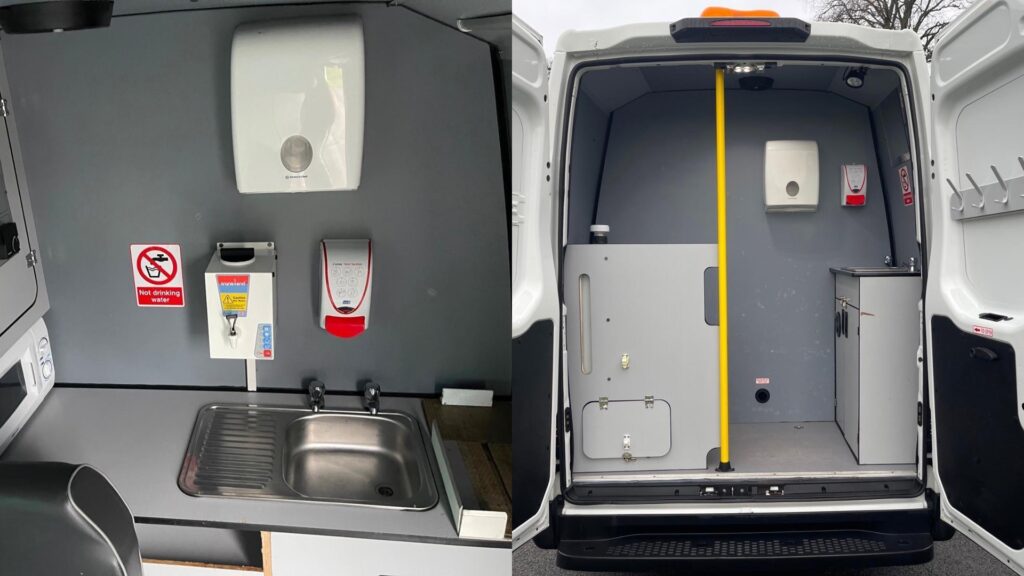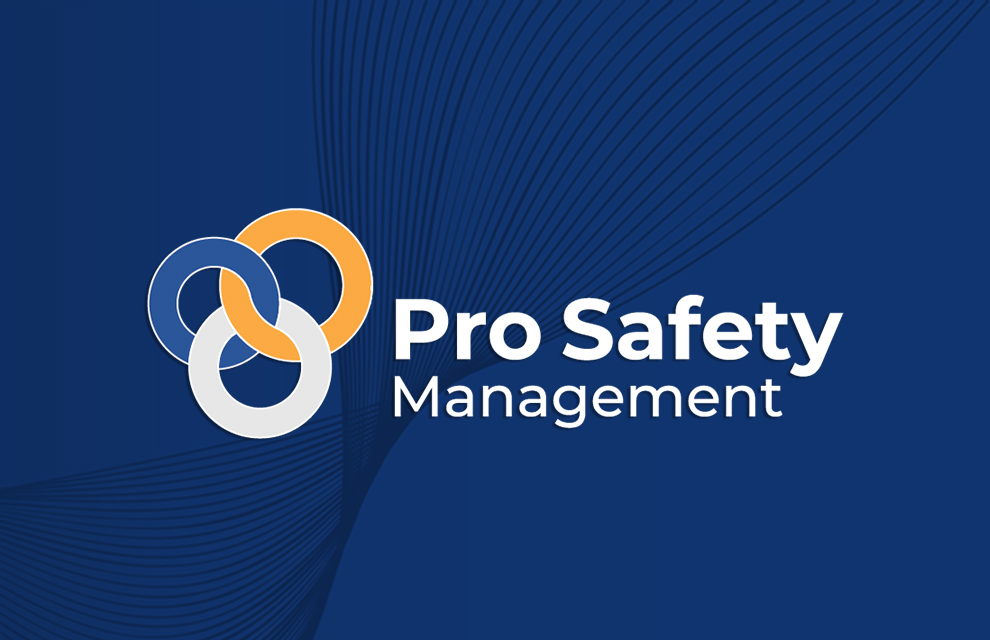
I hope you enjoy reading this blog post.
If you want my team to just do your health and safety for you, click here.
Telecoms Welfare Made Easy: Step-by-Step Guide to Supporting Your Workforce

In 2025, telecoms workers should be respected.
And it’s easy to lose that respect as a Principal Contractor or Contractor when it comes to failing to provide adequate welfare.
It’s also not a good indication of the project’s Health and Safety Culture.
Under the Construction Design Management Regulations 2015, the Client is responsible for checking that welfare has been provided.
And that’s not just about ticking the box.
The Client needs to continue to check if welfare is provided at all phases of the work. That could mean that a mobile welfare van is provided for the main build phase, but as the numbers of workers reduce, welfare facilities are re-evaluated so they continue to meet the needs of the workforce.
One of the major concerns about providing adequate welfare facilities for all workers, comes when working on the external network in remote locations.
In this blog, Darren and I will cover the most common questions related to providing welfare for remote telecoms gangs/external teams and operatives.
Get the Basics Right
Here are some possible solutions for companies to provide better welfare support for external teams who don’t have direct access to toilets and washing facilities:
1. Portable restrooms: Companies can rent or purchase portable restrooms that can be placed in remote locations where there are no permanent restroom facilities available. These restrooms can be serviced regularly to ensure cleanliness and hygiene.
2. Mobile hand washing stations: Companies can also provide mobile hand washing stations that can be placed in areas where workers are stationed for extended periods of time. These stations can be equipped with soap dispensers and paper towels or hand dryers.
3. Personal protective equipment (PPE): Companies can provide their employees with PPE such as gloves, masks, and sanitizer to ensure their safety and to minimise the spread of germs.
4. Rest and break areas: Companies can set up rest and break areas in remote locations where employees can take a break from their work and have access to facilities such as drinking water, snacks, and seating.
5. Communication and training: Companies can communicate the importance of hygiene and sanitation to their employees and provide training on how to maintain good hygiene practices in the absence of direct access to toilets and washing facilities.
6. Collaborating with local businesses: Companies can also collaborate with local businesses to provide access to their restroom facilities. This can be done through partnerships or by reimbursing the businesses for the use of their facilities.
To summarise, companies can provide better welfare for gangs of telecoms works who don’t have direct access to toilets and washing facilities by providing portable restrooms, mobile hand washing stations, PPE, rest and break areas, communication and training, and by collaborating with local businesses. These solutions can help ensure the health and safety of workers and maintain a positive work environment.
The Legal Stuff on Welfare
Here are some of the legal requirements set by the Health and Safety Executive (HSE) in the UK that companies must follow when providing welfare facilities for their employees:
1. Workplace (Health, Safety and Welfare) Regulations 1992: These regulations require employers to provide suitable and sufficient welfare facilities for their employees, including toilets and hand-washing facilities.
2. Control of Substances Hazardous to Health Regulations 2002: These regulations require employers to provide adequate washing facilities where employees may be exposed to hazardous substances, such as chemicals or biological agents.
3. Management of Health and Safety at Work Regulations 1999: These regulations require employers to assess the risks to the health and safety of their employees and take measures to mitigate those risks, including providing welfare facilities.
4. Provision and Use of Work Equipment Regulations 1998: These regulations require employers to provide adequate washing facilities where employees use work equipment that may become contaminated, such as construction equipment.
5. Personal Protective Equipment at Work Regulations 1992: These regulations require employers to provide personal protective equipment, such as gloves or masks, where necessary to protect the health and safety of their employees.
In addition to these legal requirements, the HSE also provides guidance for employers on how to provide suitable welfare facilities for their employees, including those who work in remote or temporary locations. This guidance includes information on the minimum standards for toilets, washing facilities, and rest areas, as well as guidance on how to manage the risks associated with these facilities.
It’s important for companies to adhere to these legal requirements and guidance to ensure the health and safety of their employees and to avoid potential legal liabilities.
How much does Welfare Cost for Telecoms?
As you and I know, telecoms work can be challenging and often requires working in remote locations and adverse weather conditions.
Providing adequate welfare facilities for these workers is essential to ensure their health and safety, and to maintain a positive work environment.
Here are some example costs for facilities which allow you to provide better welfare facilities for your teams.
1. Portable Restrooms: Portable restrooms are a great solution for companies to provide their workers with access to toilets in remote locations where there are no permanent restroom facilities available. Portable restrooms typically cost between £60-£100 per unit per week, depending on the size and type of unit.
2. Mobile Hand Washing Stations: In addition to toilets, employers must also provide their workers with hand-washing facilities. Mobile hand washing stations equipped with soap dispensers and paper towels or hand dryers can be placed in areas where workers are stationed for extended periods of time. The cost for a mobile hand washing station ranges from £200-£400 per unit per week.
3. Personal Protective Equipment (PPE): Employers must provide their workers with PPE such as gloves, masks, and sanitizer to ensure their safety and to minimize the spread of germs. The cost for PPE varies depending on the type and quantity required, but an average cost for a set of PPE for one worker is around £50 per week.
4. Rest and Break Areas: It’s important for workers to take breaks and rest when working long hours in the field. Employers can set up rest and break areas in remote locations where employees can take a break from their work and have access to facilities such as drinking water, snacks, and seating. The cost for setting up a rest and break area depends on the size and facilities provided, but an average cost for a basic rest area is around £100-£200 per week.
5. Communication and Training: Employers can communicate the importance of hygiene and sanitation to their employees and provide training on how to maintain good hygiene practices in the absence of direct access to toilets and washing facilities. The cost for providing communication and training varies depending on the type and extent of training required.
6. Collaborate with Local Businesses: Employers can collaborate with local businesses to provide access to their restroom facilities. This can be done through partnerships or by reimbursing the businesses for the use of their facilities. The cost for collaborating with local businesses depends on the agreement made, but an average cost for reimbursement is around £10-£20 per worker per week.
Here is an estimated breakdown of the total cost of welfare facilities for a gang of 6 telecoms operatives working in a remote rural location for 4 weeks, laying fibre optics cables in the highway:
1. Portable Restrooms: 2 units per week (assuming 1 unit for every 3 workers), at £80 per unit per week = £640 for 4 weeks.
2. Mobile Hand Washing Stations: 1 unit per week, at £300 per unit per week = £1,200 for 4 weeks.
3. Personal Protective Equipment (PPE): 6 sets of PPE at £50 per set per week = £1,200 for 4 weeks.
4. Rest and Break Areas: 1 basic rest area at £150 per week = £600 for 4 weeks.
5. Communication and Training: Assuming an average cost of £500 for training materials and communication.
6. Collaborate with Local Businesses: Assuming no collaboration with local businesses.
Total cost for welfare facilities for 6 telecoms operatives working in a remote rural location for 4 weeks: £4,140.
To break down the overall cost per day, we can divide the total cost by the number of working days in 4 weeks (20 days, assuming a standard 5-day work week):
£4,140 / 20 = £207 per day for welfare facilities for the entire gang of 6 telecoms operatives.
Therefore, the estimated cost per day per worker for welfare facilities is:
£207 / 6 = £34.50 per worker per day.
Do you think this figure is too high or too low? Leave a comment below.
NOTE:
Why have you assumed 1 unit for every 3 workers?
The Health and Safety Executive’s guidance recommends one toilet unit per seven workers on a construction site, and this ratio can be adjusted depending on the circumstances. In the case of telecoms operatives working on a highway, it is recommended that one toilet unit is provided for every three workers due to the nature of the work and the lack of nearby facilities.
Therefore, I assumed one toilet unit for every three workers in this scenario. However, this ratio can be adjusted based on the number of workers, the location of the work site, and other factors that may impact the needs of the workers.
Further Key Points to Mention
HSE Welfare guidance makes clear that where toilets, hand basins, drying rooms etc. haven’t been provided, or they’re inadequate, an Improvement Notice (IN) is the appropriate response. There will be local exceptions that might even dial this up to a Prohibition Notice (PN), for example if there’s an imminent risk to health.
But the guidance also states that prosecution should be considered for repeated offences – or even if the first offence is bad enough.
The penalties for getting it wrong are therefore significant. The guidance quotes multiple regulations and guidance documents, weaving together a framework for the inspectors to justify enforcement action. The most significant is obviously the Construction (Design and Management) 2015 (CDM) regulations. Among other things, these introduced clear definitions for all parties in construction (including clients), removing the cloak of invisibility that had allowed some clients to claim ignorance.
In practice a client needs to create an environment where work can be carried out with the appropriate welfare facilities in place. If the works involve a specific fenced-off construction site, use of the client’s own facilities should not be the default option. The CDM regs go on to say that where there isn’t such a specific construction site, clients are legally required to make their own facilities available for use.
Contractors’ duties
Principal contractors have clear and unavoidable duties to provide facilities from prior to the start of construction work, all the way through to the end of the project. Contractors’ duties shadow those of the PC. If there are several contractors on a site, it’s a case of liaising and cooperating with the PC. If there’s only one, then all of the duties are yours.
That ‘so far as reasonably practicable’ get-out gets some clarification with regards to welfare. In essence it’s about weighing the measures needed against the sacrifices involved. Crucially, though, it’s weighted in favour of health and safety, i.e. it’s assumed you’ll provide the welfare, unless you can demonstrate it would involve ‘grossly disproportionate sacrifices’. Cost is not the primary focus and shouldn’t be considered ‘disproportionate sacrifice’.
Toilets are mandatory (i.e. you don’t get to say they’re not reasonably practicable), and there’s a hierarchy, with flushing toilets at the top and chemical portable restrooms very much at the bottom. The guide states that for large or long-running sites the provision of ‘only portable toilets’ is considered insufficient – as it would very much be reasonably practicable to provide better.
All welfare facilities must also be ‘readily accessible’. What this means varies with the urgency: rest breaks can be planned, so the distance to travel can be greater. Toilet facilities, however, need to be much more convenient. The guide quotes BS6465(1) as stating that construction sites should provide WCs within 150 metres of the workplace. Arranging toilet use with a café that’s 10 minutes’ drive away would not cut it. For the same reason the numbers of cubicles are also pre-determined.
Use of alternative facilities for transient construction sites
For the purpose of this information sheet, a transient construction site is either where short duration work (up to a week) is carried out at one or many locations, or is of a longer duration carried out while moving over a continuous geographical area, eg major roadworks, cable laying contracts etc.
In such cases, it may be appropriate to make arrangements to use facilities provided by the owner of existing premises, in which the work is being done, local public facilities or the facilities of local businesses. Clear agreement should be made with the provider of the facilities; it should not be assumed that local commercial premises can be used without their agreement. Facilities must be readily accessible to the worksite, open at all relevant times, be at no cost to the workers, be of an acceptable standard in terms of cleanliness and have handwashing facilities. Workers need to be made aware of the arrangements to use them and be informed of their location.
Table 1 gives an indication of the options available, in order of preference, for providing welfare facilities for transient construction sites.
Table 1 Welfare facilities: the options
cdm telecoms e-learning course
NEW: Construction Design Management Regulations for Telecoms E-Learning Course
Do you want better compliance?
Hey, I’m Alex Burbidge. I’m determined to make a business health and safety compliant. My only question is, will it be yours?

About Pro Safety Management
We are a Specialist Telecoms Health and Safety Consultancy with over 40+ years experience. Serving some of the global leading telecommunication companies, we provide specialist and strategic health and safety management ensuring operational standards at the highest level.
Do you want better compliance?
Hey, I’m Alex Burbidge. I’m determined to make a business health and safety compliant. My only question is, will it be yours?


